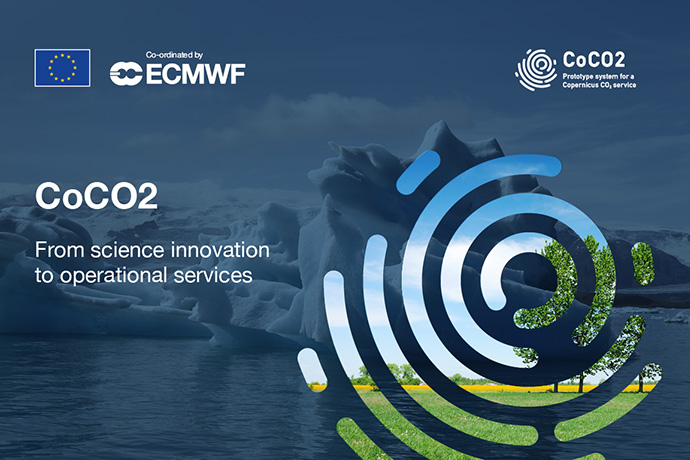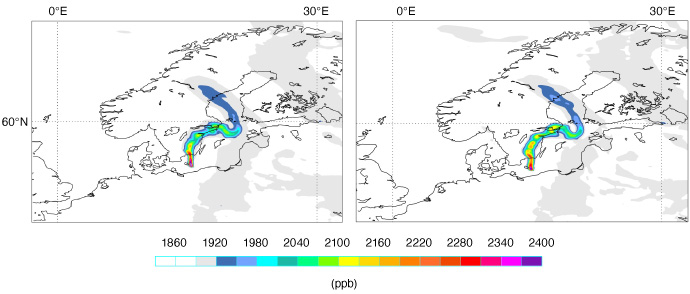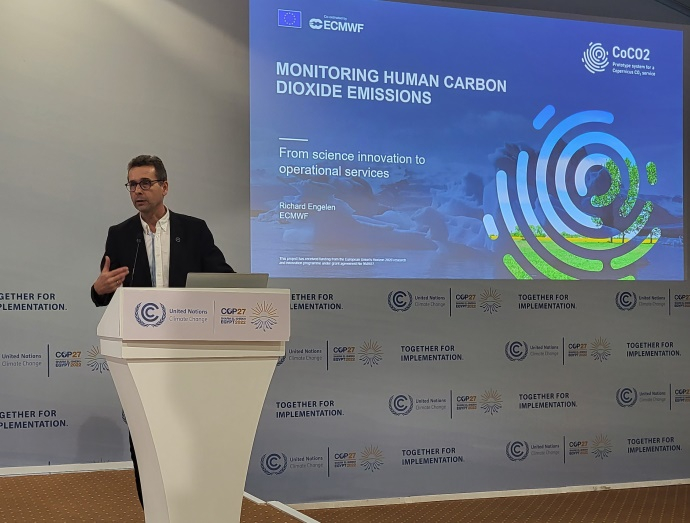

The ECMWF-coordinated project for a Prototype system for a Copernicus CO2 service (CoCO2) to monitor anthropogenic CO2 emissions worldwide has moved into its final year.
This EU-funded initiative is on track to feed into a permanent anthropogenic greenhouse gas emissions Monitoring and Verification Support Capacity (CO2MVS). This capacity will provide continuous monitoring of carbon dioxide (CO2) and methane (CH4) emissions and fluxes using a combination of observations and Earth system modelling.
CO2MVS is being developed as part of the EU’s Copernicus Atmosphere Monitoring Service (CAMS) implemented by ECMWF.
The progress of CoCO2 means that a prototype of the CO2MVS should be ready by the end of the year. The prototype system will then be implemented as a pre-operational service within CAMS in parallel with further development of the system.
“Once the CO2MVS is up and running, we will have the tools to monitor anthropogenic greenhouse gas emissions globally and locally,” said Richard Engelen, the Project Coordinator of the CoCO2 and Deputy Director of CAMS. “This will provide vital data and tools to support efforts to keep global warming in check.”
The CO2MVS is expected to become fully operational in 2026, at the same time as the launch of a dedicated Copernicus satellite mission, CO2M, that will provide observations of CO2 and CH4.
Progress in 2022
At a meeting in December 2022, progress on the CoCO2 project was presented. Work to build the prototype system to monitor anthropogenic CO2 and CH4 emissions is wide. It includes, for example, work on data sources, vegetation models, transport models, and data assimilation methods.
The key is the ability to separate natural occurrences of CO2 or CH4 from anthropogenic ones. To do this, the system will combine many data sources that provide information about different parts of the full carbon cycle. These include, for example, observations of atmospheric CO2, CH4, and nitrogen dioxide (NO2); vegetation models; and prior knowledge about emission sources.

Simulations of the CH4 plume coming from the Nord Stream pipe leaks on 27 September 2022 using two different advection schemes. MPDATA (left) is a locally mass conserving scheme, which is in principle more accurate than the semi-Lagrangian advection scheme. On the right, a semi-Lagrangian scheme with COMAD interpolation and a mass fixer is shown, which produces comparable results – a very similar scheme will be used by CAMS from later this year.
Some highlights of the progress made in 2022 include:
- A global mosaic of regional emission inventories for 2015, integrating existing regional emission inventories (typically providing the most detailed information) to have a regionally accepted reference for evaluating the global emission inventories used in global inversions.
- The extension of ECMWF’s Integrated Forecasting System (IFS) to allow the estimation of emissions of CO2, CH4, NO2, and other substances, within a 24-hour data assimilation cycle.
- The assessment of local-scale models and emission-estimation methods for individual emission plumes and the development of improved methods.
- A submission to the UNFCCC 1st Global Stocktake, presenting data from five demonstrators that illustrate the capabilities of the future CO2MVS, driven by current observations.
This is an active research programme with already 19 published journal papers by December 2022.
Presence at COP27
The CoCO2 project took part in the UN Sharm el-Sheikh Climate Change Conference in November 2022, also known as COP27.
It showed results from the project and a roadmap towards the Copernicus CO2MVS. Richard Engelen gave a presentation on systematic observation of greenhouse gases to support climate action in cities and regions.

Richard Engelen at the COP27 conference in Egypt. The presentation included outcomes from a CoCO2 workshop organised jointly with ICLEI – Local Governments for Sustainability and held in October 2021.
Future observations
As part of the Copernicus Sentinel programme, a constellation of satellites is being developed by the European Space Agency (ESA) and the European Organisation for the Exploitation of Meteorological Satellites (EUMETSAT) to support the CO2MVS.
They will be able to measure concentrations of CO2 and CH4 in the atmosphere with an unprecedented combination of accuracy, coverage, and detail.
The satellites will observe the entire globe in just a few days, and they will be able to look at individual carbon dioxide and methane sources, such as power plants and fossil fuel production sites. They are expected to go into operations in 2026.
The CORSO project
A new project in support of the CO2MVS started on 1 January. This EU-funded project, called CORSO (CO2MVS Research on Supplementary Observations), intends to further support the CO2MVS development and enhance its ability to assess anthropogenic CO2 emissions.
It focuses on the use of observations of co-emitted species (e.g. NO2 and CO), radiocarbon, and the land biosphere to better distinguish between the effects of fossil fuel and biospheric fluxes on atmospheric CO2 concentrations.
“As the last year of CoCO2 begins, the different elements for the ambitious CO2MVS capacity are coming together,” says Anna Agusti-Panareda, an ECMWF scientist who works on the CoCO2 project. “We hope that by the end of the year a first phase of the CO2MVS can begin before it becomes fully operational in 2026.”
Acknowledgements
The CoCO2 project has received funding from the European Union's Horizon 2020 research and innovation programme under Grant Agreement No. 958927.
